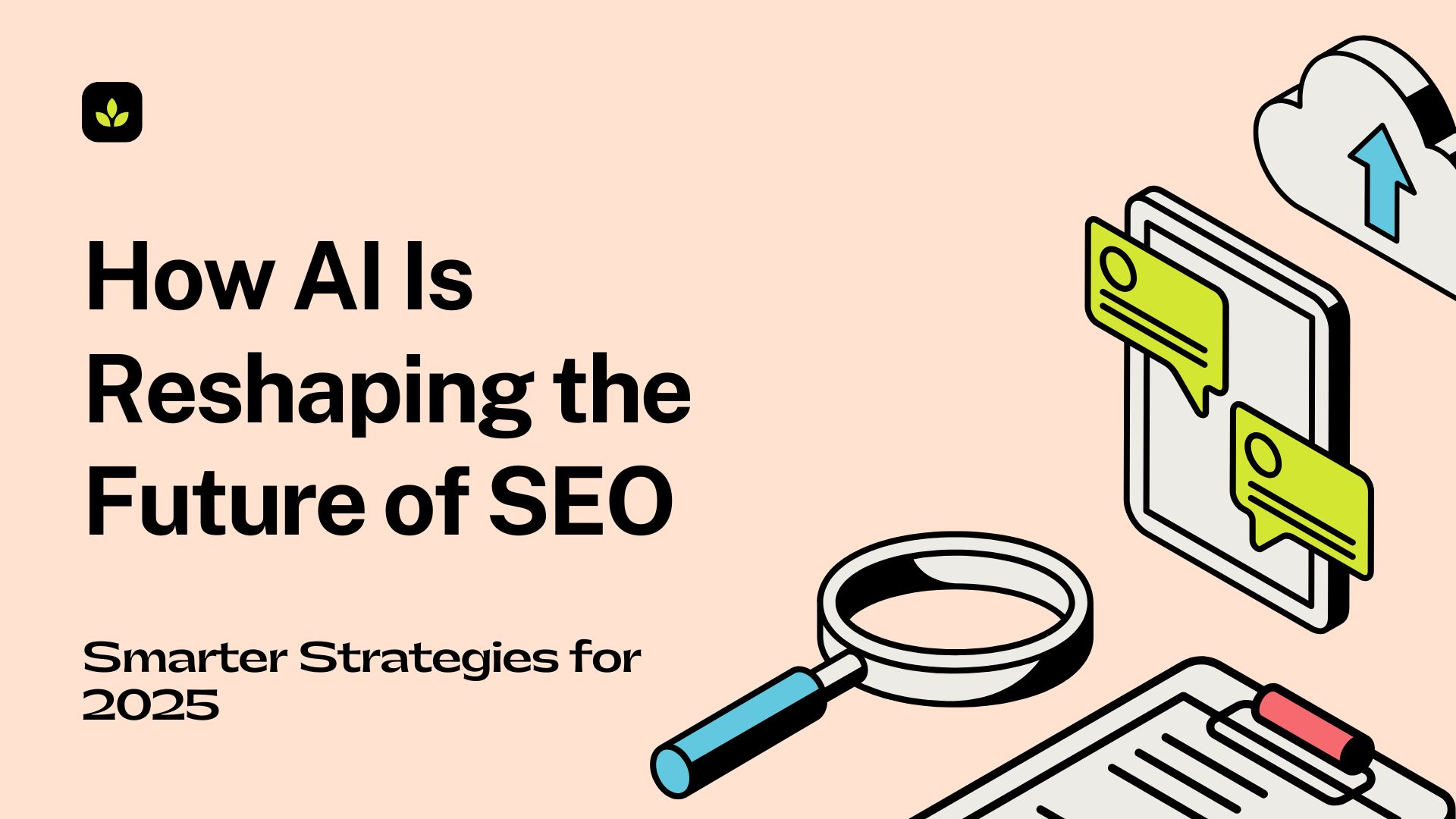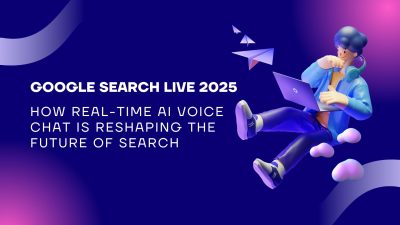Imagine searching for a product online and getting not just a list of websites, but answers tailored precisely to your intent. That’s not a futuristic scenario – it’s happening now, thanks to AI-driven changes in how search engines understand content and user behavior.
SEO today goes far beyond simply targeting keywords or building backlinks. It’s becoming increasingly intertwined with artificial intelligence (AI), which is refining how search engines interpret data, predict user behavior, and evaluate website relevance. The traditional SEO toolbox – technical audits, content writing, and metadata optimization – is being redefined by smarter algorithms and machine learning models.
As we step into 2025, understanding how AI is influencing the core of SEO isn’t optional – it’s essential. Whether you’re a business owner trying to stay relevant or an SEO strategist aiming to keep up with constant updates, knowing how AI is altering the rules of the game can make all the difference. Let’s explore how these shifts are taking shape and what they mean for SEO professionals and businesses alike.
Search Algorithms Are Learning Faster – and Better
Google’s AI Evolution
Google’s transition from keyword-centric algorithms to AI-powered models like BERT (Bidirectional Encoder Representations from Transformers) and MUM (Multitask Unified Model) has changed how content is evaluated. These models focus on understanding context rather than isolated phrases.
For example, searching for “how to get from London to Paris without flying” previously might have brought up articles on flights or generic travel guides. Today, thanks to models like MUM, Google understands the intent: you’re likely looking for train or ferry options.
The Impact on Keyword Strategy
Keywords are still relevant, but AI prefers semantic richness over repetition. Writing naturally, focusing on answering questions, and covering subtopics in detail are now more effective than cramming in phrases.
Tip for 2025:
Focus on addressing the full range of related topics rather than concentrating solely on the main keyword when creating content. AI values depth, clarity, and user relevance over keyword frequency.
Voice and Visual Search: New Dimensions of Intent
Talking to Search Engines
The rise of voice assistants like Alexa, Siri, and Google Assistant has created a shift from typed queries to spoken ones. These queries tend to be longer, more conversational, and often framed as questions.
This means SEO strategies must now include content that answers who, what, where, when, why, and how more effectively. Pages that clearly answer these questions are more likely to show up in voice results.
Visual Search Enters the Picture
Visual search tools such as Google Lens and Pinterest Lens have made searching with images increasingly common. AI now allows users to search using photos instead of text, which requires websites to optimize visuals with proper alt tags, file names, and structured data.
Real-World Example:
An online furniture store optimized its product images with detailed alt-text, product dimensions, and JSON-LD schema. This resulted in a 40% increase in traffic from Google Lens within three months.
Content Creation Is Getting Smarter, Not Just Automated
The Rise of AI-Written Content
Tools like ChatGPT, Jasper, and Writesonic are becoming mainstream. But search engines can distinguish between low-quality auto-generated text and thoughtful, informative content.
Creating content with the help of AI tools isn’t inherently harmful – but publishing without human review, depth, or originality will likely cause drops in rankings. Google’s Helpful Content Updates in recent years penalize content that exists “just to rank” rather than help users.
Human + AI: The Winning Combo
AI should serve as a helpful writing partner rather than a complete substitute. Use it to:
- Generate topic ideas
- Analyze keyword gaps
- Summarize large data sets
- Find trending questions from users
But editorial insight, tone, and accurate information still require a human touch.
Predictive SEO: Getting Ahead of the Curve
AI Tools Forecasting Search Behavior
Platforms like SurferSEO, Clearscope, and MarketMuse now use machine learning to suggest what content your competitors are ranking with, which keywords are gaining traction, and what your page is missing. This enables marketers to forecast demand instead of merely responding to it.
Agencies like XSquareSEO are already applying these methods by integrating keyword forecasting, SERP behavior analysis, and topical authority planning into their client strategies. This kind of future-focused SEO helps businesses capture attention before a trend fully emerges.
For example, predictive SEO can reveal that searches for “AI-powered email marketing tools” are rising in January before they peak in Q2. Brands that create timely content on that topic in advance will have an edge.
Search Trends Are Getting Granular
Machine learning allows search engines to personalize results based on device, location, search history, and even browsing behavior. This personalization is narrowing the generic SERP and replacing it with individualized experiences.
What ranks on your screen might not even appear on someone else’s, making broad ranking strategies less reliable. Instead, adapting to micro-intents is becoming more crucial.
User Experience (UX) Is the New SEO Signal
Core Web Vitals and Beyond
Google’s Core Web Vitals – metrics focused on loading performance, interactivity, and visual stability – are evaluated by AI models that understand how users engage with content.
A site might be keyword-optimized but still fail to rank if it:
- Loads slowly
- Has poor mobile design
- Displays intrusive pop-ups
- Doesn’t guide the user clearly
Behavioral Patterns and Engagement Metrics
AI now tracks not just whether a user clicks a link, but how long they stay, how they interact with elements, and whether they return. Sites with higher dwell time and lower bounce rates tend to be favored.
Case in Point:
A SaaS company revamped its blog design to include interactive FAQs, embedded videos, and simplified page layouts. Average time-on-page increased by 45%, and within six months, blog rankings improved across multiple keywords.
Ethical SEO and AI: Navigating the Fine Line
Transparency and Content Attribution
As AI-generated content grows, so do concerns about transparency. Ethical SEO in 2025 includes:
- Clearly labeling AI-assisted content
- Avoiding plagiarism through human editing
- Prioritizing factual accuracy
Search engines are working on systems to detect AI-overuse and are more likely to trust sources with clear authorship, expert input, and accountability.
Spam Detection Is Getting Smarter
Gone are the days when you could stuff keywords or generate dozens of low-effort pages and get rewarded. Google’s AI spam filters now detect content patterns, unnatural linking behaviors, and misleading SEO tactics more efficiently than ever.
To stay safe:
- Focus on quality over quantity
- Keep your backlink profile natural
- Avoid low-authority content farms
Conclusion
AI isn’t replacing SEO – it’s reshaping it. From smarter algorithms that interpret meaning over keywords to the rise of predictive insights, AI is changing how we approach content creation, user experience, and search visibility.
But the core of SEO remains the same: understand your audience and serve them better than anyone else. AI simply gives you sharper tools to do that more effectively. As we move deeper into 2025, those who adapt to this smarter ecosystem – by combining human insight with machine intelligence – will set the pace for the digital landscape.
In this new era, SEO is no longer just about chasing rankings. It’s about understanding context, behavior, and intent – and responding to them in a way that feels natural, helpful, and real. That’s the kind of strategy AI respects – and rewards. Businesses that align their content and technical efforts with smarter SEO services are better positioned to grow sustainably, even as algorithms continue to evolve.





